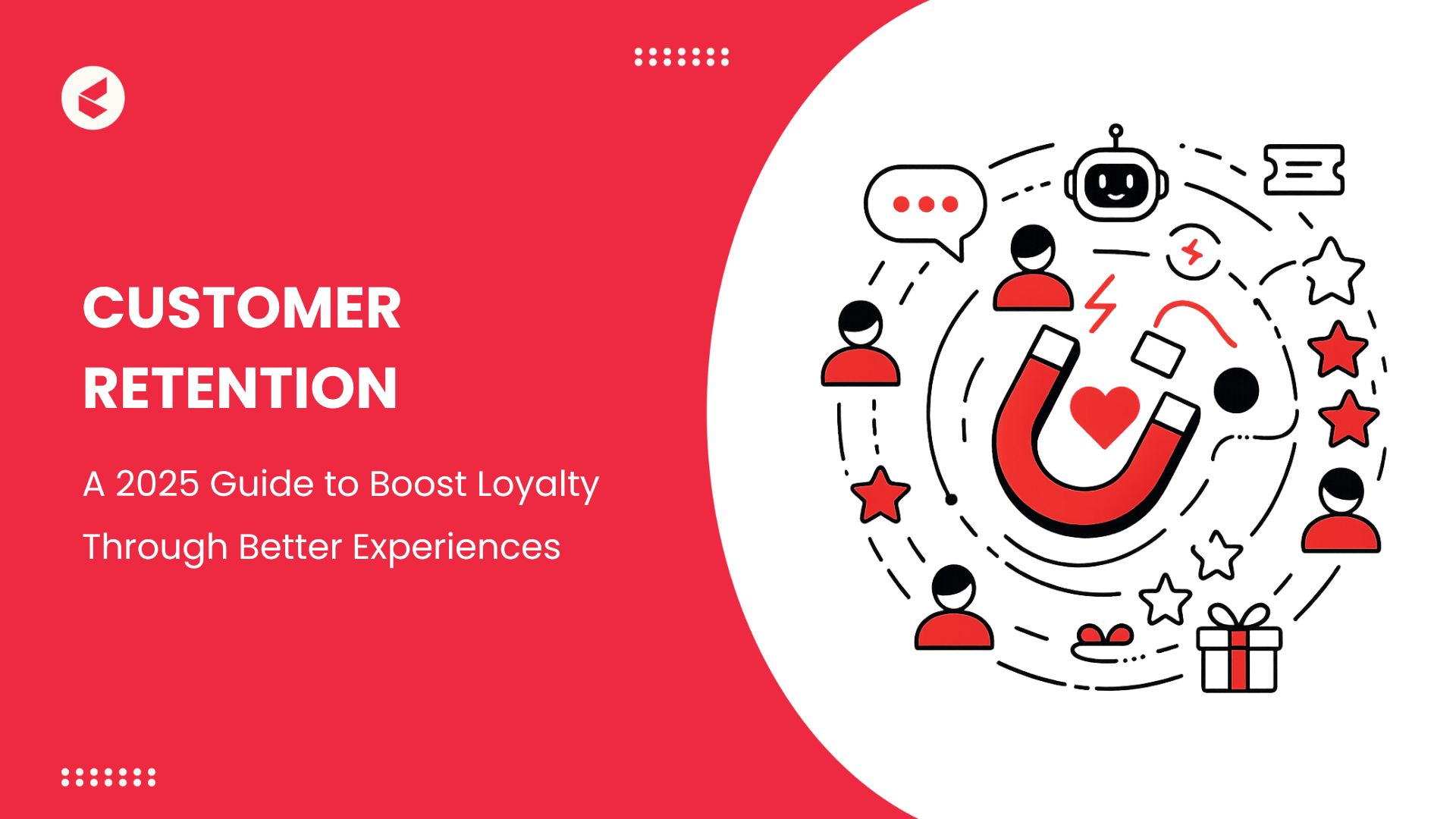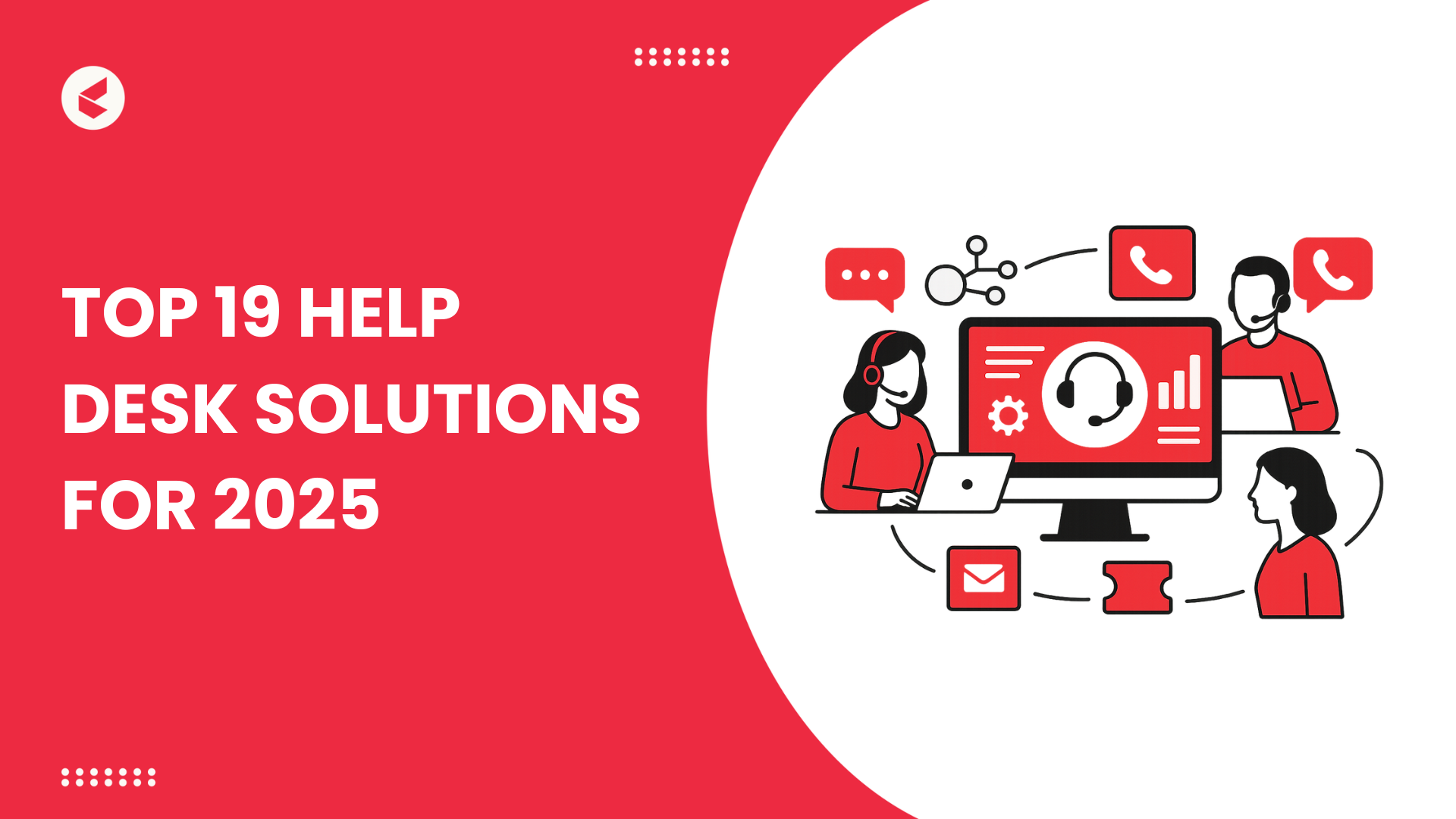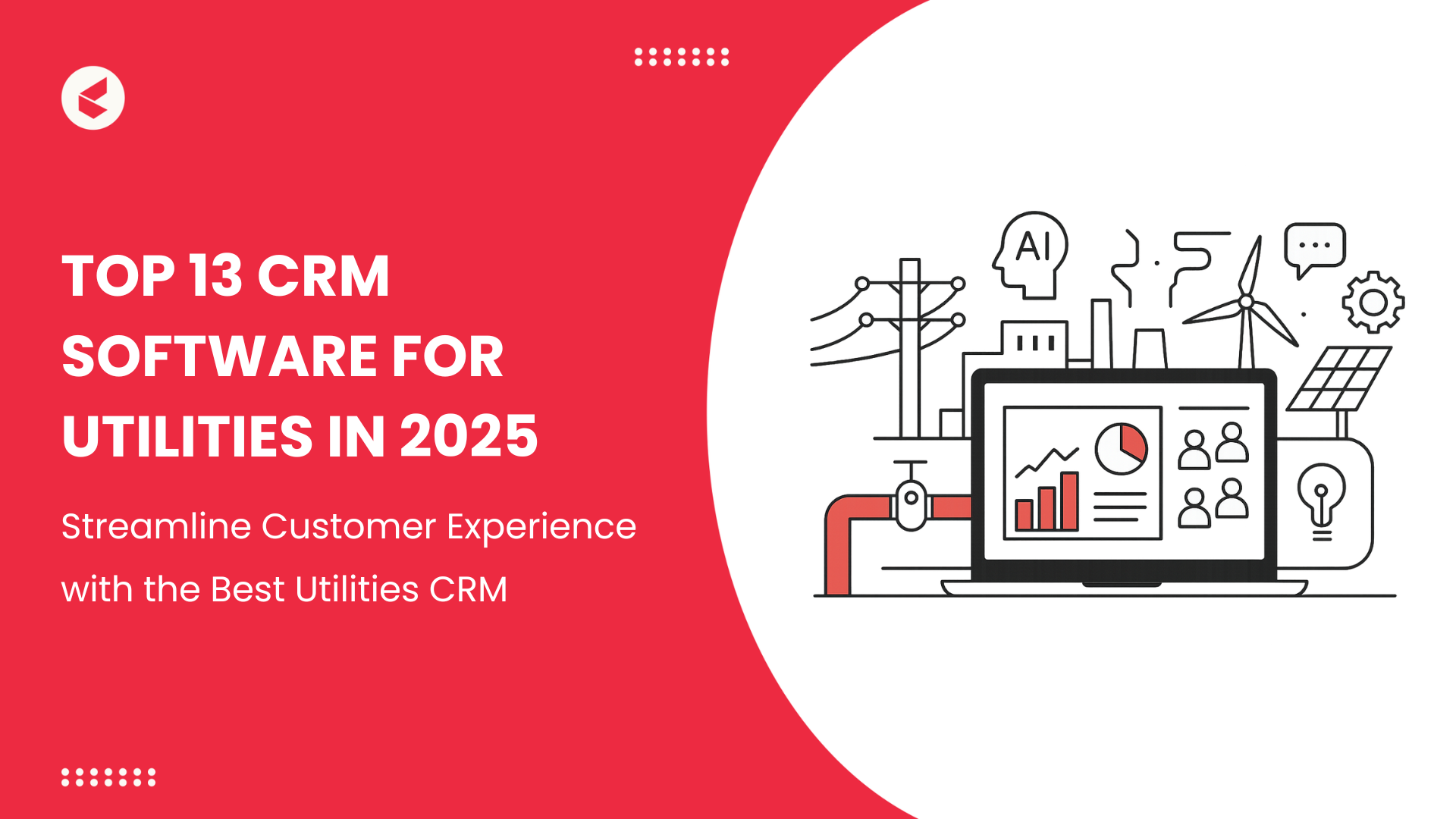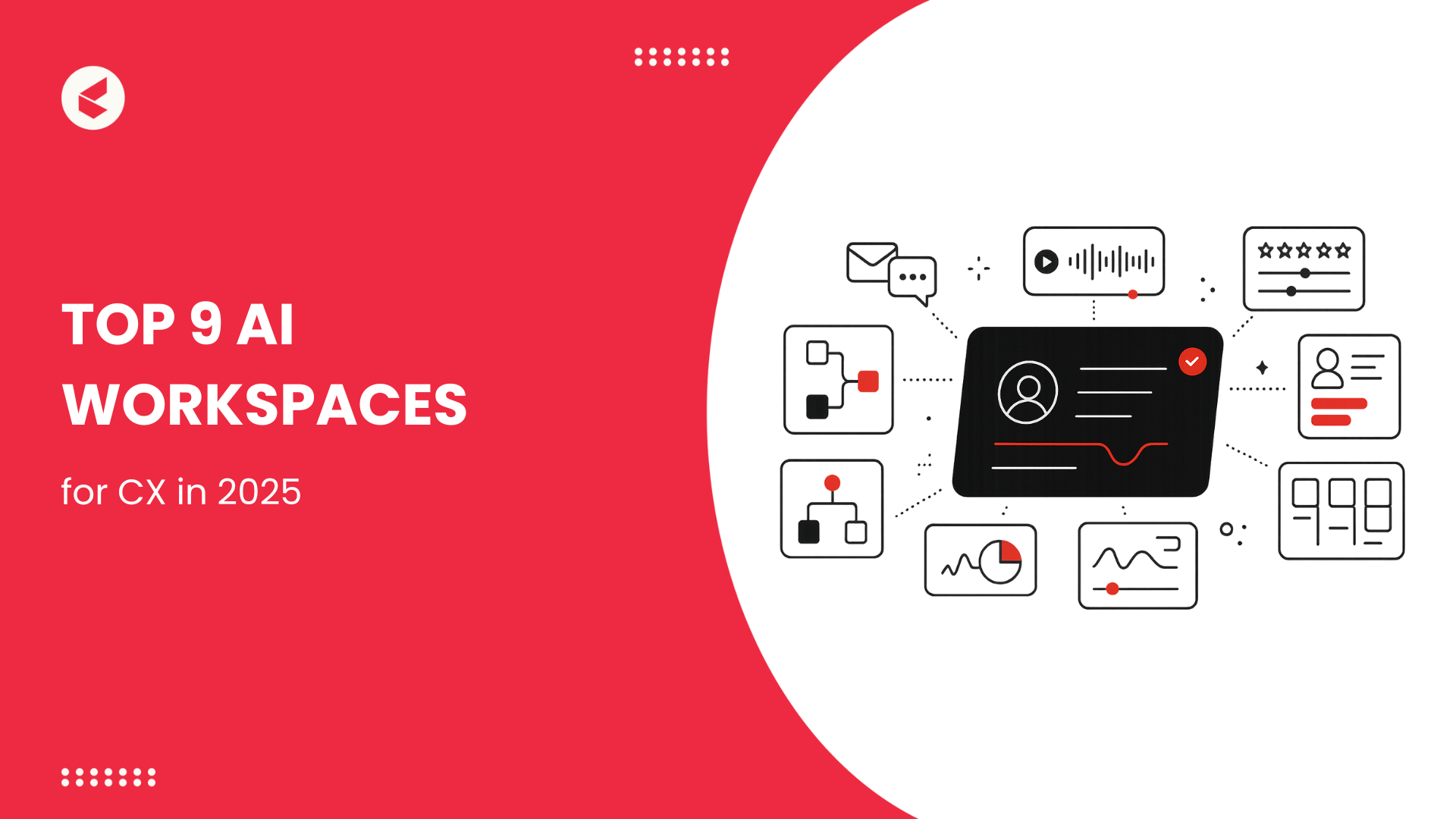New customers might grow your numbers, but it’s the returning ones who shape your long-term success. That’s why customer retention has become a key business priority.
A major part of customer retention is the kind of customer experience you deliver. When customers consistently have positive interactions, they’re far more likely to stay. The numbers reinforce this link between CX and retention. SAP reports that companies offering strong CX see retention rates as high as 89%, compared to just 33% for those with weak CX efforts.
This gap directly affects brand reputation and customer trust. For enterprise teams managing high service volumes, creating better experiences is a top priority. This blog dives into the customer retention strategies that work in 2025 and how the right tools, like smart CX software for retention, can make all the difference.
A Brief Introduction to Customer Retention
At its core, customer retention is about how well your business keeps its existing customers over time. But it’s more than just a number on a dashboard; it’s a reflection of trust and the overall customer experience you deliver day after day.
Think of it this way: If someone buys from you once, that’s a win. But if they come back again and again, you’re doing something right. That “something” often comes down to how helpful and personalized their interactions feel while they’re talking to your support team.
This level of personalization usually requires the right balance of automation and context — something modern CX platforms are increasingly designed to support.
- Why does customer retention matter so much? Because it directly impacts growth. Returning customers tend to spend 67% more than new customers, according to the BIA Advisory, and are more likely to recommend your brand. The benefits of customer retention (better margins and higher lifetime value) go far beyond just repeat purchases.
- How do you improve retention? It starts with listening. Use feedback loops, identify friction points, and fix the small things that frustrate customers. Then, layer in the right tools like CX software for retention, to automate what can be automated and personalize what matters most.
- What are the best retention strategies? The most effective retention strategies are grounded in timely support and the kind of service that makes customers want to stay. You shouldn’t be bombarding people with endless messages in the name of retention strategies.
The Significance of Customer Retention for Business Growth
Customer retention delivers more value than acquisition. Harvard Business Review reports that bringing in a new customer can cost anywhere from five to 25 times more than retaining an existing one. This gap adds up fast, especially at scale.
Here’s what makes customer retention strategies essential to long-term business success:
| Advantage | What It Means? |
| Higher ROI | Retained customers spend more over time which increases their lifetime value without additional marketing costs. |
| Predictable Revenue | Loyal customers drive consistent sales which makes it easier to forecast the revenue. |
| Stronger Brand Advocacy | Happy, returning customers refer others and leave positive reviews organically. |
| Lower Churn, Better Margins | Retaining more customers reduces the cost of replacing lost revenue. |
Strong retention signals solid customer experience and retention alignment. If people keep coming back, it usually means your CX is working and the support is responsive.
Important Customer Retention Metrics With Quick-Use Formulas
Customer retention metrics help assess customer satisfaction which is vital for optimizing long-term growth strategies.
Given below are the important customer retention metrics with formulas you can use right away:
1. Churn Rate
Percentage of customers who stop doing business with you during a specific period.
- Formula: Churn Rate = (Customers Lost ÷ Total Customers at Start) × 100
- Why it matters: A high churn rate often signals gaps in CX, support, or product value.
2. Retention Rate
Percentage of customers you retain over a given period.
- Formula Retention Rate = [(End Customers – New Customers) ÷ Start Customers] × 100
- Why it matters: It’s the most direct indicator of how well your retention efforts are working.
3. Repeat Purchase Rate
Percentage of customers who make repeated purchases.
- Formula: Repeat Purchase Rate = (Repeat Customers ÷ Total Customers) × 100
- Why it matters: A higher rate suggests better customer experience and retention.
4. Net Revenue Retention
Revenue growth from existing customers after accounting for upgrades, downgrades, and churn.
- Formula: NRR = (Starting MRR + Expansion MRR – Churned MRR) / Starting MRR, where MRR stands for Monthly Recurring Revenue.
- Why it matters: Shows whether your current base is growing in value over time.
5. Customer Lifetime Value
The total revenue a business expects from a customer throughout their relationship.
- Formula: CLTV = Average Purchase Value × Purchase Frequency × Customer Lifespan
- Why it matters: Helps prioritize high-value retention segments.
6. Customer Satisfaction Score
Calculates how satisfied customers are after a specific interaction.
- Formula: CSAT = (Positive Responses ÷ Total Responses) × 100
- Why it matters: Quick pulse check on CX software for retention effectiveness.
7. Customer Effort Score
Determines how easy it is for customers to complete a task or resolve an issue.
- Formula: Measured on a scale (usually 1–7) after interaction
- Common questions asked: “How easy was it to resolve your issue today?” “How much effort did you personally have to put forth to handle your request?” “The company made it easy for me to handle my issue.” (Agree or disagree?)
- Why it matters: Lower customer effort leads to higher retention.
8. Net Promoter Score
This measures willingness to recommend your brand.
- Formula: NPS = % Promoters – % Detractors
- Why it matters:Strong predictor of future loyalty and organic growth.
Quick-Use Metric Cheat Sheet
| Churn Rate | (Customers Lost ÷ Start Customers) × 100 |
| Retention Rate | [(End – New Customers) ÷ Start Customers] × 100 |
| Repeat Purchase Rate | (Repeat Customers ÷ Total Customers) × 100 |
| Net Revenue Retention | (Existing Rev + Upgrades – Downgrades – Churn) ÷ Start Rev |
| CLTV | Avg Purchase × Frequency × Customer Lifespan |
| CSAT | (Positive Responses ÷ Total Responses) × 100 |
| CES | 1–7 scale; lower score = less effort |
| NPS | % Promoters – % Detractors |
Effective Customer Retention Strategies for 2025
Find out the most effective, real-world strategies that businesses can use today to improve customer retention.
1. Show Up Where Your Customers Are with Omnichannel Support
Customers today move fluidly across platforms: email, chat, social media, phone, WhatsApp, etc. They expect your brand to keep up.
More than half of high-performing companies already have a robust omnichannel strategy in place, and it’s showing clear returns in both customer retention and satisfaction.
A complete CX platform like Kapture CX helps unify conversations from multiple touchpoints into a single view so that no message is ever missed.
2. Respond Faster to Retain Longer
Response time is often the first impression a brand makes. And that impression sticks. A study by Notta found that 44% of customers consider quick support resolutions to be critical to a good customer experience.
Automated ticket routing and smart bots on Kapture’s CX platform help speed up resolutions by 70%.
3. Collect Customer Feedback Religiously
If you’re not regularly collecting customer feedback, you’re missing critical signals. Utilize short surveys, NPS prompts, or CSAT forms after any interaction with customers.
Don’t just collect the data. Act on it. That’s where the real impact lies.
Modern CX platforms simplifies this process by integrating feedback tools and real-time analytics right into your customer journey.
4. Be Proactive and Not Just Reactive
Think about the last time a brand solved a problem before you even had to ask. Felt good, right? That’s the kind of trust proactive support builds. Flagging recurring issues or offering solutions based on usage patterns help reduce support fatigue and build customer trust.
Consider the example of Kapture’s AI-led service automation tools. These tools enable businesses to set up intelligent alerts and workflows to reach customers proactively before they even think of leaving.
5. Reward Loyalty Generously
According to Forbes, existing customers are 60–70% more likely to convert than new prospects. You can show appreciation to your loyal customers through reward programs and thank-you messages.
In addition, you can take it a step further with Kapture CX. Kapture CX can be configured to track milestones and automate outreach to make loyalty engagement consistent and scalable.
6. Keep Your Team Synchronized with the Right Tools
Behind every smooth customer experience is a well-informed support team. Equipping your agents with unified dashboards and training resources ensures that they serve better and keep customers happy.
Kapture provides a customizable agent workspace that blends helpdesk, CRM, and knowledge base tools into one platform for more efficiency and customer satisfaction.
Elevate Your Customer Retention Strategy With Better Customer Experience
Even a tiny 1% lift in customer retention can translate into a 10% increase in your monthly recurring revenue, according to Churnkey. And if you want to improve customer retention, the most direct route is through creating standout customer experiences.
According to a PwC report, 65% of customers now find a positive customer experience more influential than advertising. 43% are also more willing to pay more for better convenience.
These numbers are strong signals that customer experience and retention go hand-in-hand.
Here’s what better customer experiences actually look like in action:
- Quick and effortless support: No one wants to wait. Relevant responses leave an indelible impression on your customers.
- Customized communication: Using a customer’s name, understanding their history, and tailoring responses shows you’re paying attention.
- Consistency across channels: Be it chat, email, or phone, the conversation should feel smooth and informed.
Example: Amazon’s Customer Experience Edge
So many people turn to Amazon when they shop online. Though it offers a wide range of products and competitive prices, the real draw is how easy it is to use.
Amazon minimizes friction at every stage of the customer journey through its proactive issue resolution. Its systems are designed to anticipate customer needs and eliminate repetitive tasks.
It’s a textbook case of how operational excellence amplifies CX to deliver loyalty at scale.
Best Tools to Improve Customer Retention: 2025 Edition
The top tool categories that are helping brands retain more customers in 2025 are as follows:
| Tool Category | What It Does? | Examples |
| CX Platforms | Unifies support channels to track interactions and helps teams deliver high-quality experiences at scale. | Kapture, Freshdesk, Zendesk, Genesys |
| Customer Feedback Tools | Collects input through surveys, reviews, and ratings to uncover gaps in service and customer expectations. | SurveyMonkey, Typeform, etc. |
| Loyalty and Rewards Systems | Encourages repeat business by rewarding purchases and referrals. | Smile.io and Yotpo Loyalty |
| Retention Automation Tools | Automates customer touchpoint like follow-up emails and win-back offers. | Customer.io |
| CRM and Analytics | Tracks customer behavior and preferences. Uses insights to personalize communication and support. | Salesforce, Zoho CRM, HubSpot |
How to Adapt and Improve Your Customer Retention Strategy?
Customer retention is a dynamic system that needs tuning over time. The real skill lies in being able to adapt and evolve with your customers.
- Start by shortening the time to value. Customers form opinions quickly. Hence, you’ve to make sure your onboarding helps them get real use out of your product/service from the start. If people can’t find value fast, they’ll look elsewhere just as quickly.
- Next, tie your offerings to actual customer needs, not assumptions. That starts with embedding feedback loops throughout the customer journey, from onboarding to renewal. Every data point: a survey, support ticket, or feature request, can offer directional insight.
- Keep in mind, product experience (PX) is part of customer experience. Adoption and retention go hand in hand when customers genuinely enjoy using your product. Therefore enhance product usability, reduce friction, and continuously educate users to get more out of what they already have.
- Also, value-based engagement beats transactional selling every time. Make your customers feel seen. When your support reflects a real understanding of their challenges, it builds trust. And trust is what keeps people coming back.
- Finally, humanize interactions with customers. High-touch support where it matters most can be the difference between a loyal customer and a lost one. Therefore it’s equally important to keep the human element alive in your customer support.
The Big Shifts in Customer Retention
Smarter strategies and shifting expectations form consumers are fueling a new era of customer retention. Here are the top trends you can expect in customer retention moving forward.
1. Automation
According to Gartner, there’s growing pressure from the top to automate customer service wherever possible. But this isn’t about replacing people with machines, it’s about using automation to handle repetitive, low-value tasks so your teams can focus on creating meaningful experiences.
2. Customer Service as a Core Enterprise Function
Another big shift? Customer service is no longer an isolated department. It’s becoming a core part of how businesses operate and shape product development and revenue strategy. The smartest brands are weaving service and support into every touchpoint by treating CX as a company-wide priority.
3. Generative Artificial Intelligence
Then there’s AI, especially generative AI, completely changing the game. Generative AI is helping businesses unlock and activate the knowledge buried in documents, training manuals, and help desks. It’s making support faster, more personalized, and surprisingly intuitive. And customers are catching on. More and more of them are choosing to interact with AI assistants first and expecting seamless results.
What does these trends mean for retention? It means the bar is rising. Customer support experience should feel smooth and to make that possible, the brand must truly understand its customers.
The fact is, the future of retention will belong to businesses that embrace these changes and use them to build more responsive customer relationships.
Automate smartly, align deeply, and never stop listening. The future’s bright and it’s customer-shaped.
The Bottom Line
The foundation of sustainable business lies in customer retention. Every meaningful interaction shapes how customers feel about your brand. And in a crowded market, those feelings determine whether they stay or walk away.
When you build a strong customer experience and retention framework powered by empathy and the right technology, you create a brand people trust and return to.
That’s exactly where Kapture CX steps in.
Customer Service, Reimagined with AI Agents
We’ve trained our AI Agents on real conversations to respond with empathy, act with context, and drive outcomes that matter.
Book a demo today and see how we help you retain more customers and boost your CSAT score by more than 25%, one interaction at a time.
FAQs
They absolutely should. Building trust in healthcare or banking is not the same as what keeps a customer loyal to an eCommerce brand. Every industry has priorities and problems of its own. Customizing CX to meet the demands and expectations of the sector is therefore crucial.
Automation does increase efficiency and speed, but too much of it can make relationships seem distant. The best CX software for retention finds a balance using automation for routine tasks while keeping space for human connection when it really matters.
From the initial contact, whether it’s a welcome email or after-sale assistance, customer retention begins. This is because customers are more likely to leave if they don’t see value right away.
Predictive analytics can flag signs of churn before it happens. Through the analysis of support interactions, businesses can proactively step in through re-engagement campaigns before losing a customer.
Listening and showing that you did. Too often, feedback gets collected and buried. But when customers see their suggestions reflected in a product update or service change, it reinforces that their voice matters. And that’s powerful for loyalty.













